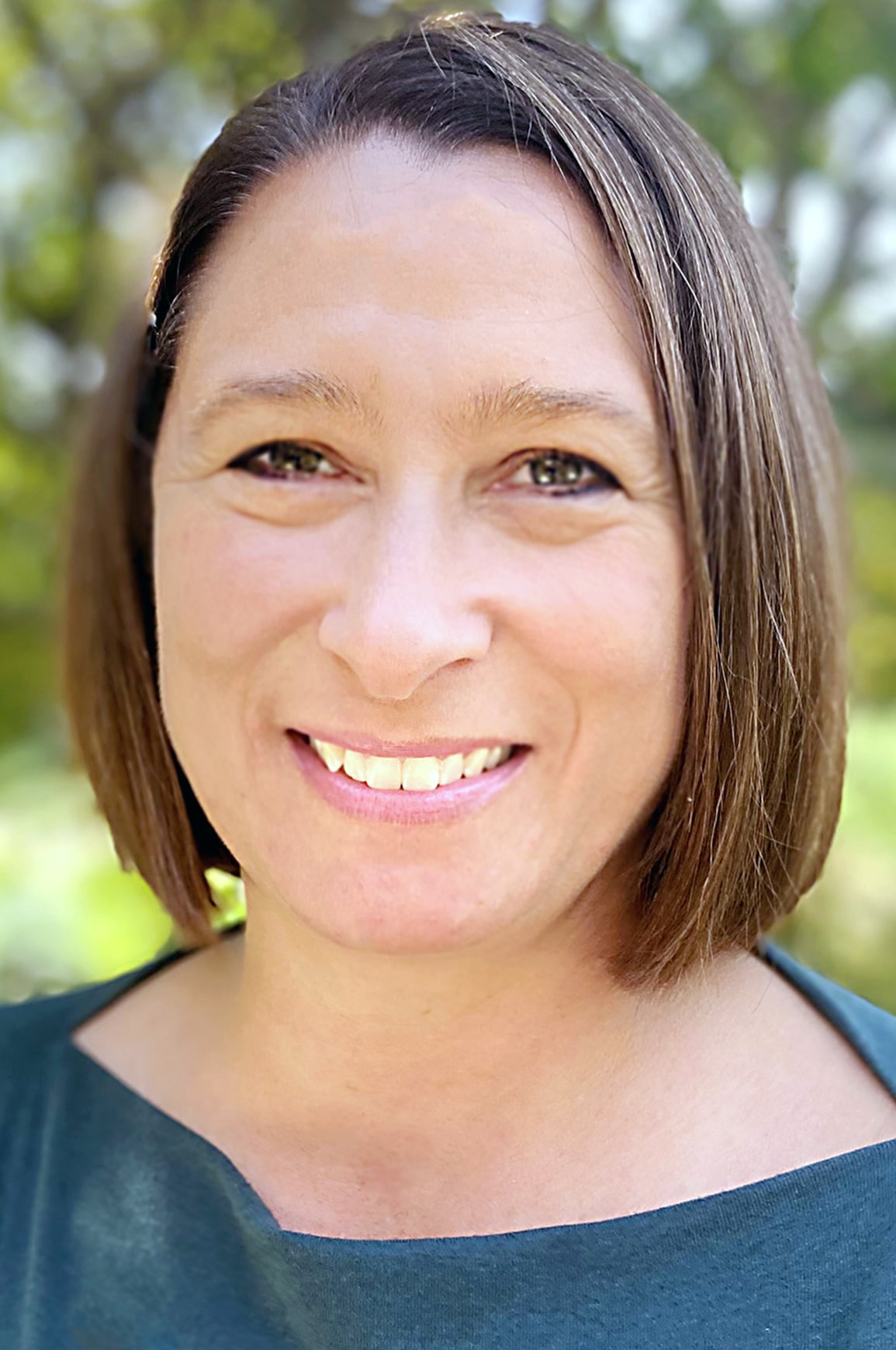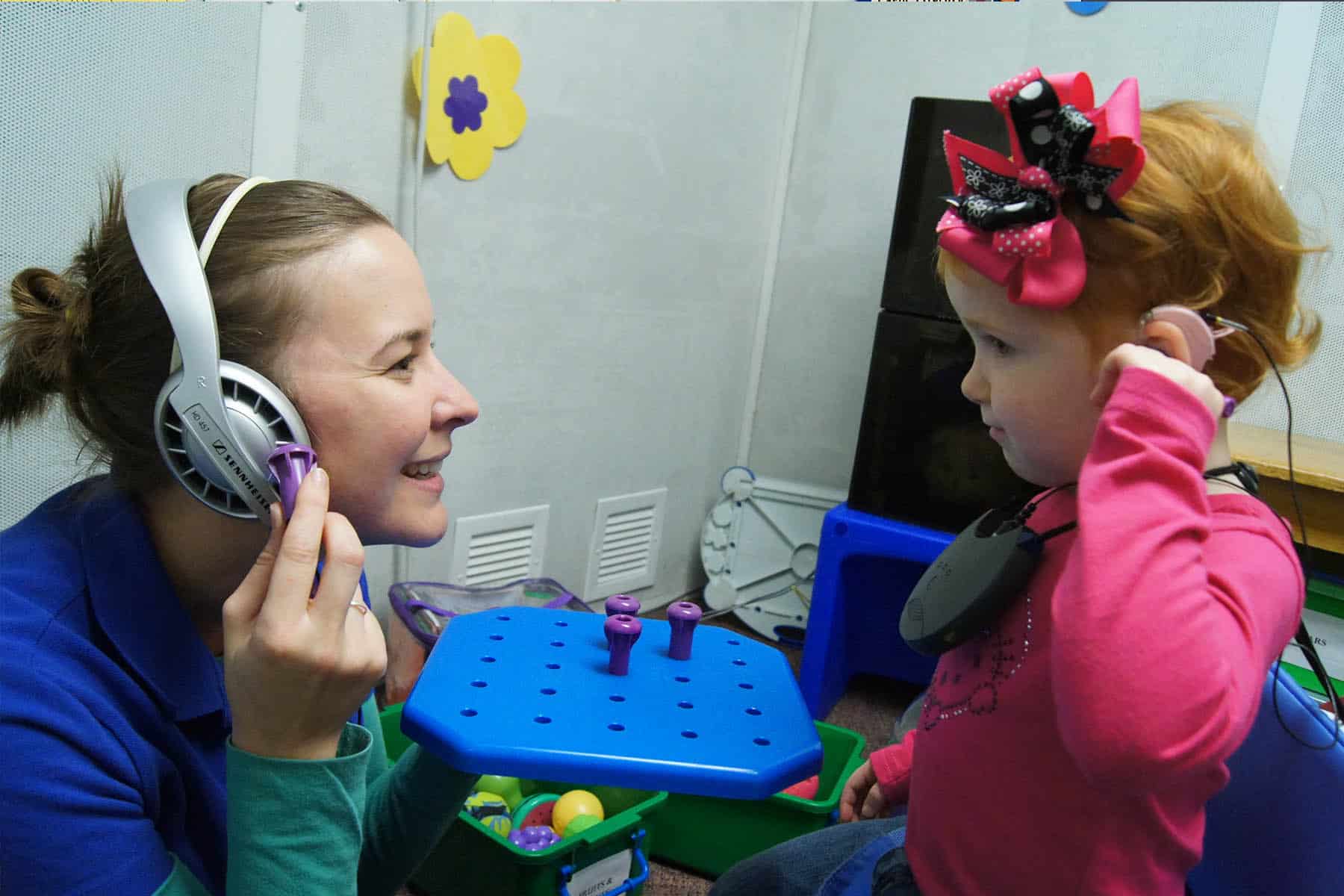The Ling sound test is an effective way to check a child’s access to a range of speech sounds. But how should the test be conducted when one of the child’s ears is hearing in the typical range, and the other is fit with a hearing device with unaided hearing in the moderate to profound/no response range?
Common phrases used for this hearing configuration include “asymmetrical hearing” (if there is a significant difference in hearing between ears) or “single-sided deafness” (if there is no measurable hearing in the ear opposite the typical hearing one). If you want to check for optimal access to sound in the aided condition, there are a few options for how to do a Ling sound check successfully. The ear that is hearing in the typical range must be plugged so that the hearing device is stimulating the brain to listen. Otherwise, the better hearing ear will interfere! To accomplish effective plugging, the audiologist or hearing health care provider might obtain an occluded full shell custom earmold for the better hearing ear. Advantages of this strategy are good reduction of sound, comfortable fit, and being re-usable. Possible disadvantages of a custom earmold would be its cost and the accessibility of obtaining one. Custom earmolds may be covered by insurance, especially if a letter of necessity from the provider accompanies the request. In this scenario, an aided Ling sound test could then be conducted in the normal fashion (remember the silence prompt!).
If a custom Earmold is not a feasible option, another strategy would be to use non-custom noise reduction earplug in the ear that is hearing in the typical range. These can be obtained from your audiologist, hearing health care provider or over-the-counter at the pharmacy for reasonable prices. Since these are non-custom, it may be necessary to utilize a second ear covering, due to slit-leaks where sound is still getting into the ear system past the earplug. Over-the-ear (circum-aural) headphones can be placed over both the outer ear and over the noise reduction earplug that is plugging the ear canal. The headphones will need to placed in a way that allows the Ling test to still occur with the aided ear open and listening. This is often called a “plug AND muff” method. The aided Ling sound test could then be conducted using the standard approach. While the advantage of this approach allows effective sound reduction, the disadvantage is that it can be difficult to put both earplug and headphone over one ear without covering up the other!
There is a third method used by audiologists while in appointments. When there is access to an audiometer, the ear with hearing in the typical range can be masked with low level noise directly from the audiometer to an insert earphone placed in the ear canal. The Ling sound test can then be performed in the aided condition at the opposite ear. The advantage for this method would be effective masking of the sound, yet a disadvantage is that audiometers and booths are not easily accessible.
In cases where one ear is in the typical range of hearing and the opposite side is aided, pre-planning is necessary to conduct a proper Ling sound check of the hearing device. To ensure that you have effectively plugged or muffed that better hearing ear, try the Ling sound check in the unaided condition before turning “on” the listening device and completing the aided version. Precision of the Lings in the unaided condition should be lower than in the aided condition if effectively plugged or muffed. Contact an audiologist near you for to obtain other strategies if the ones above cannot be executed easily.

Kathy Holtman is a Pediatric Audiologist. In addition to working at CID, Dr. Holtman has practiced at Ohio State University Medical Center, University Hospitals of Cleveland/Mednet, Cleveland Speech and Hearing Clinic and Cochlear Corporation.












